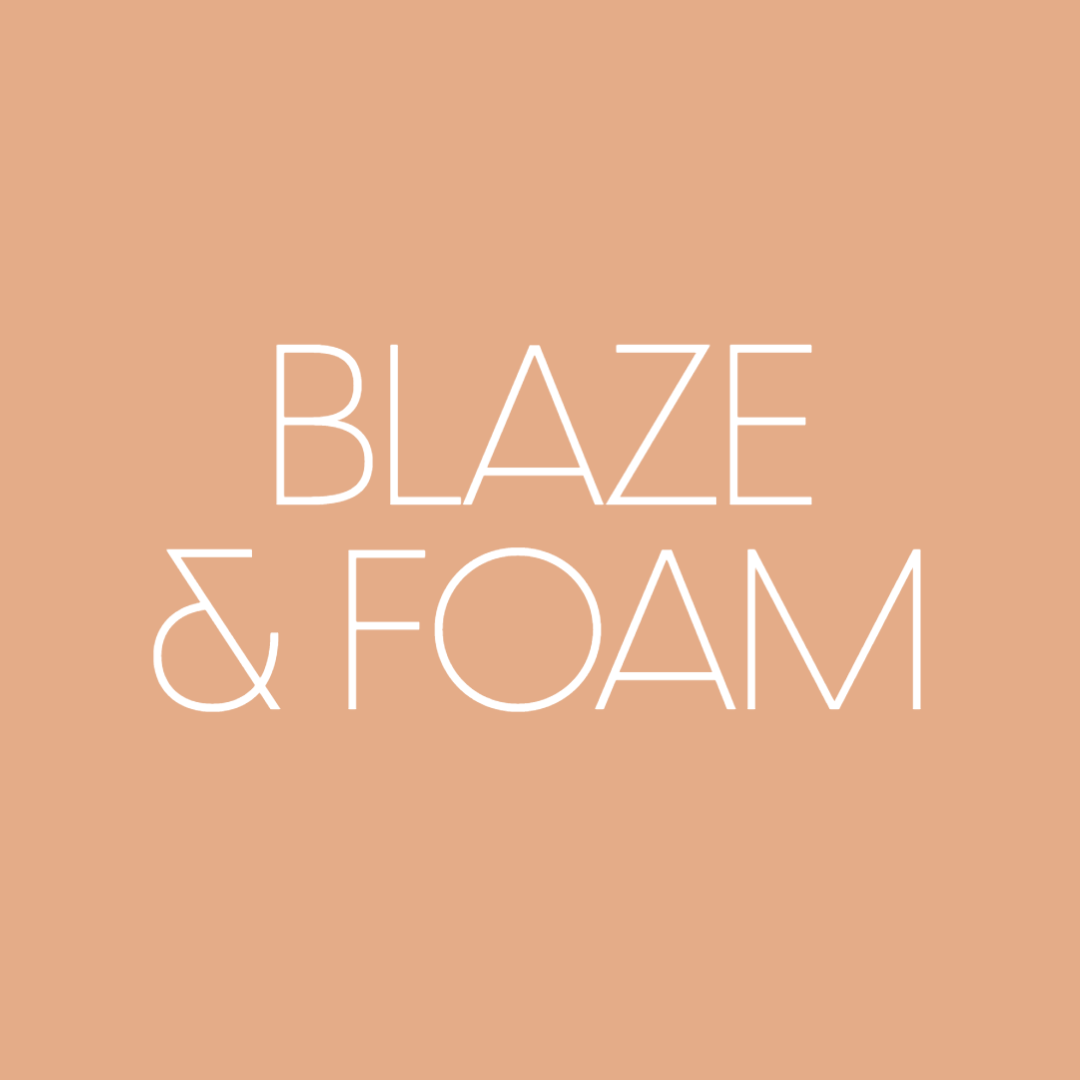Fragrance Guide
Blaze & Foam FRAGRANCE OIL Guide
Blaze & Foam fragrance oils are proudly phthalate free (pronounced (thal-ates).
What does this mean?
Phthalates are chemicals. They can be found in personal care and household items. They are added as carriers to help make the scent linger. These chemicals are not tightly bound to the other molecules, so they can find their way into our bodies.
Dibutyl phthalate (DBP), is a pthalate used in nail polish to reduce cracking; di-2-ethylhexylphthalate (DEHP) is a pthalate used in eyelash glue, and diethyl phthalate (DEP) is commonly used as a solvent and fixative in fragrance.
As candles burn, phthalates are released into the air where they may be inhaled or absorbed through the skin. Pthalates in fragrances used in creams and in soaps have the same effect.
Pthalates have been linked to various human health concerns. Effects from exposure to low levels of phthalates include endocrine disruption. Phthalate exposure in males has been linked to low sperm counts and altered sperm quality, and in females exposure can affect the thyroid. Some types of phthalates have affected the reproductive system of laboratory animals.
Phthalates can be difficult to avoid, as many labels will just list 'fragrance' or 'perfume' and not disclose the ingredients that make up that fragrance.
None of our fragrances contain phthalates. We explore this topic further in depth here.
All our fragrances conform to IFRA standards. They are packaged in recyclable, phthalate free, PET bottles. More information on IFRA is available here.
All of our products are vegan and we do not support animal testing.
Fragrance Oils
Fragrance oils are synthetic. This means they are man made and don't originate from a natural plant origin. However, many of our fragrance oils contain a high percentage of essential oils, which are natural.
Fragrance Loading
We explore the topic of industry specific maximum usage quantities vs suggested fragrance ratios for optimum performance in this blog.
Fragrance loading refers to the amount of fragrance in your product as opposed to the rest of the ingredients. For example, in a candle the product is made up of wax. If your candle is 180 grams, and we recommend a maximum 10% fragrance loading, you would add no more fragrance than 10 percent of 180. 10% is 100 grams of fragrance per 1000 grams of wax. Always conduct your own testing in small batches to find the right percentage for your product, which would fall below the maximum.
If you were using a very strong woody fragrance that travels through the whole house easily, you would need to add far less fragrance eg. 6%, as opposed too, for example, a subtle jasmine which would only fill a small bathroom 9%. Over time, and with testing you will come to know what percentages work best in your chosen wax too.
Why do we recommend a maximum?
Candle waxes will only hold a maximum of 10% of fragrance, before the product becomes compromised. For example, the fragrance could drown the wick, create increased sweating and discolouration.
Always calculate fragrance loads according to weight ie: grams and not volume ie: Mls. The reason for this is that each fragrance has a different density. Therefore if one fragrance is 50mls and another is also 50mls, they might actually not weigh the same.
It is also important that you add the fragrance at the recommended wax temperature to avoid evaporation, which leads us to flash points..
Flash Points
You will notice that we specify the flash points of each of our fragrances. This is important for safety, because it tells you the temperature at which an organic compound gives off enough vapour to burst into flame. Fragrance oil vapours are flammable. If you heated fragrance oil up and lit it with a match what would happen? It would ignite. Without the match, the vapours would just dissipate.
It also refers to the level at which the fragrance oil could diminish in quality once a temperature is reached. This information is important for your testing notes. If your wax has a higher melt point than your fragrance flash point (ie your fragrance has a low flash point), this can cause an issue. A low flash point means that it will evaporate at a lower temperature, so you could end up with a problem.
It is safe to add fragrance oils with low flash points to hot, liquid wax.Also, a fire can only start at the flash point if there is a source of ignition. Melted wax on its own will not trigger an ignition. A spark is required. Therefore, if you are using a gas stove with a flame, caution is required. Have a fire extinguisher nearby.
In the case of candles where a fragrance load is too high, significant sweating will occur. Beads of fragrance seep from the surface of the wax. Now imagine this sweating candle has its wick lit, and the flame heats up the fragrance beyond the flash point.
Vanillin
We also note on each of our fragrance listings whether the fragrance contains vanillin or not. Vanillin comes from the vanilla bean, and it can cause discolouration in soaps and body products. It can also cause your cold process batch to seize. In this case, it might be best to reduce your loading of vanillin containing fragrance oils, or to avoid them in those products,
Synthetic vs. Natural Fragrances
Please see our upcoming blog post on this issue.
Testing
Although we regularly test our fragrances per batch, your own testing is crucial in all applications. Since your own raw ingredients are possibly different to the ones we have used for testing, and our fragrances poured at a different temperature potentially, we cannot take responsibility for the outcome of your product.
